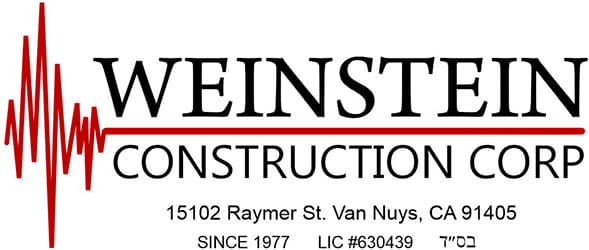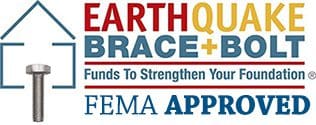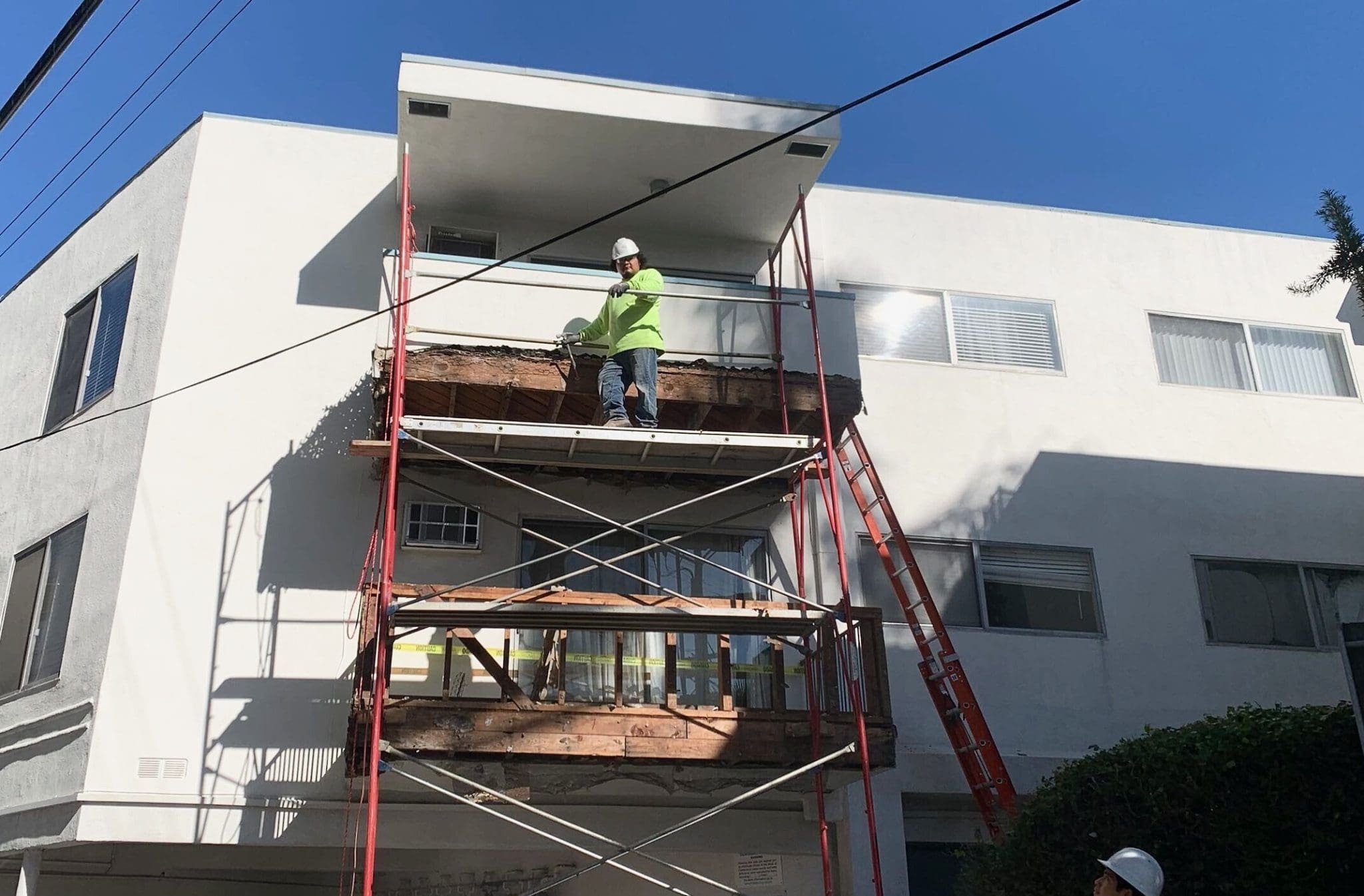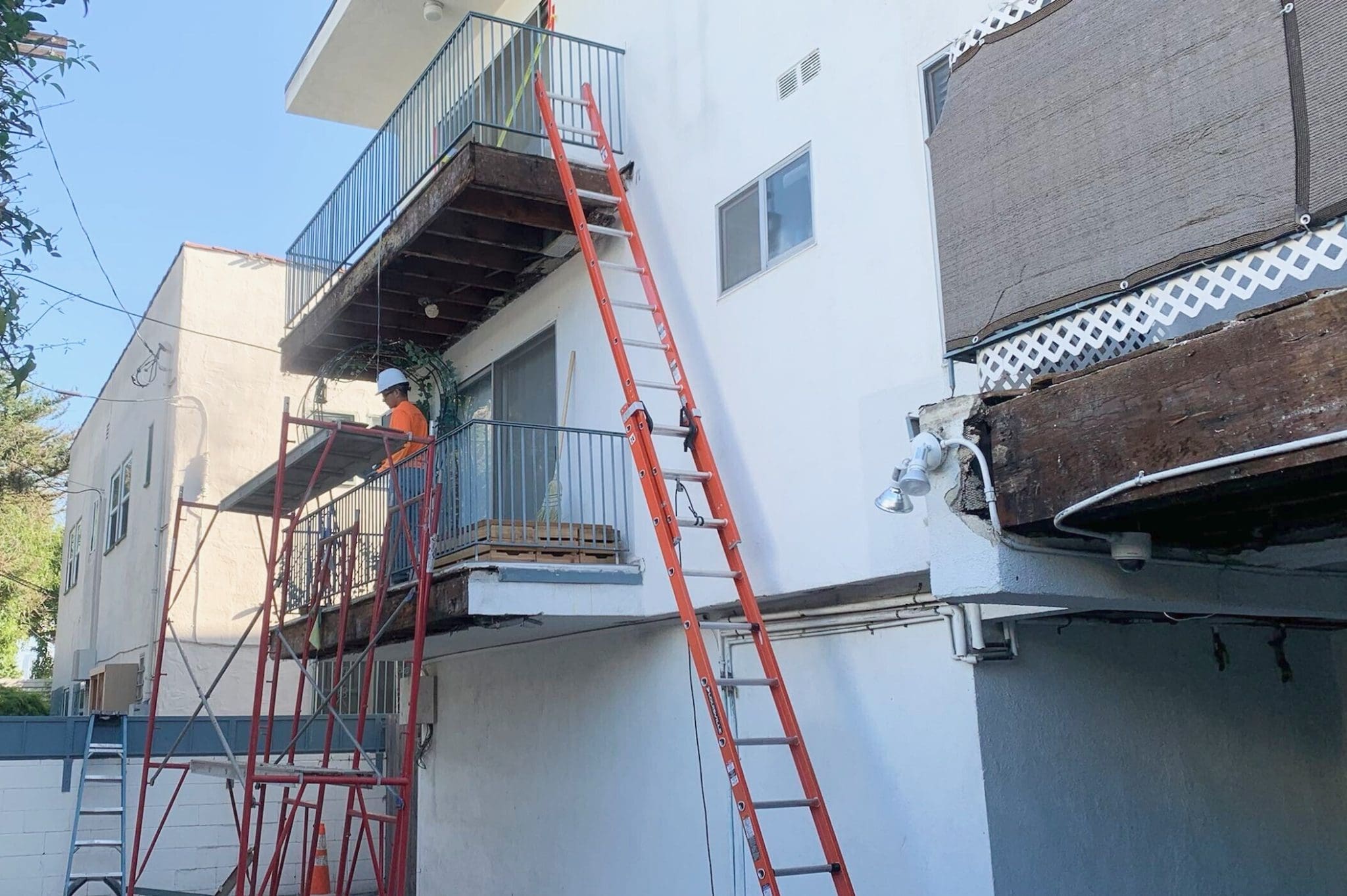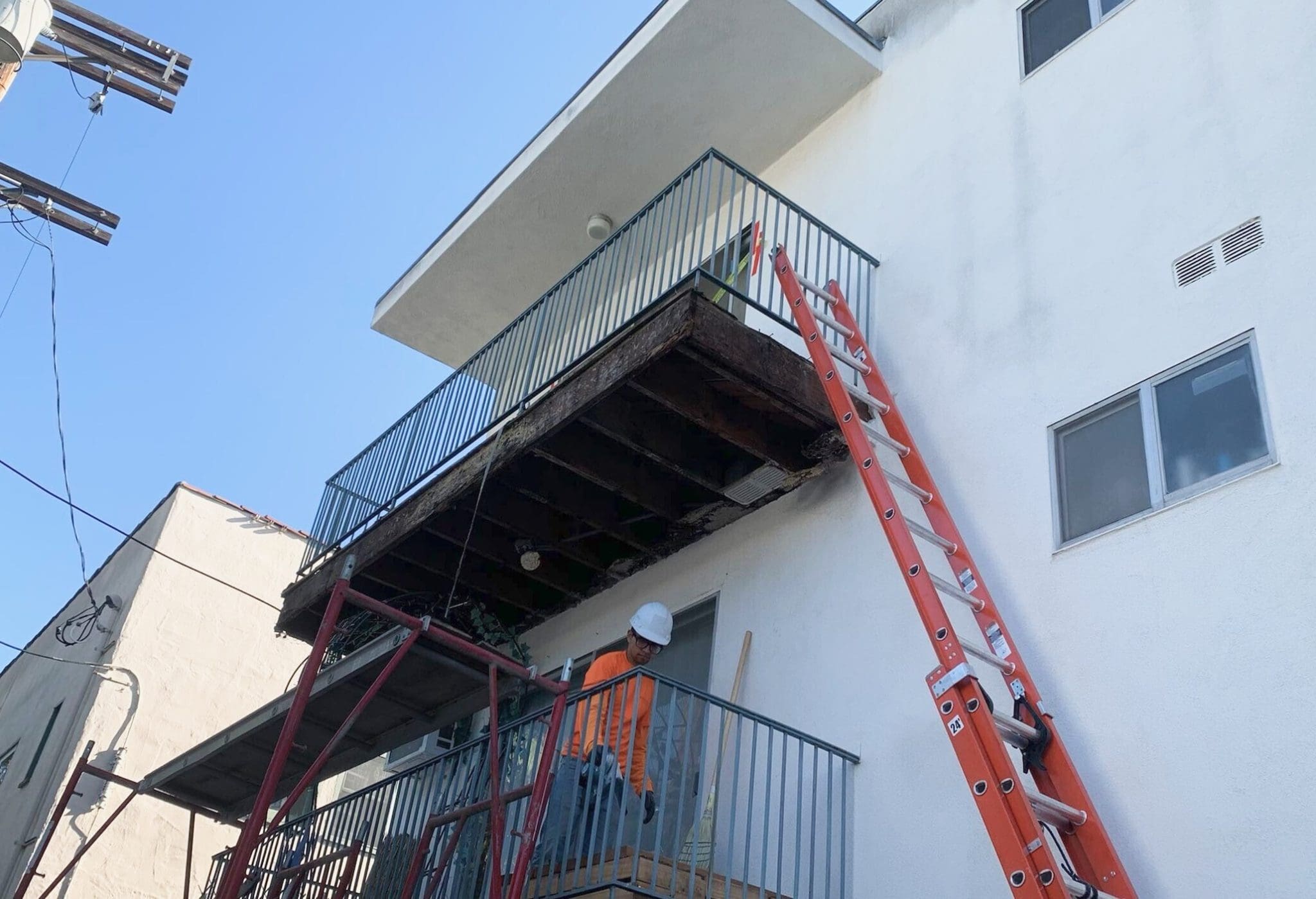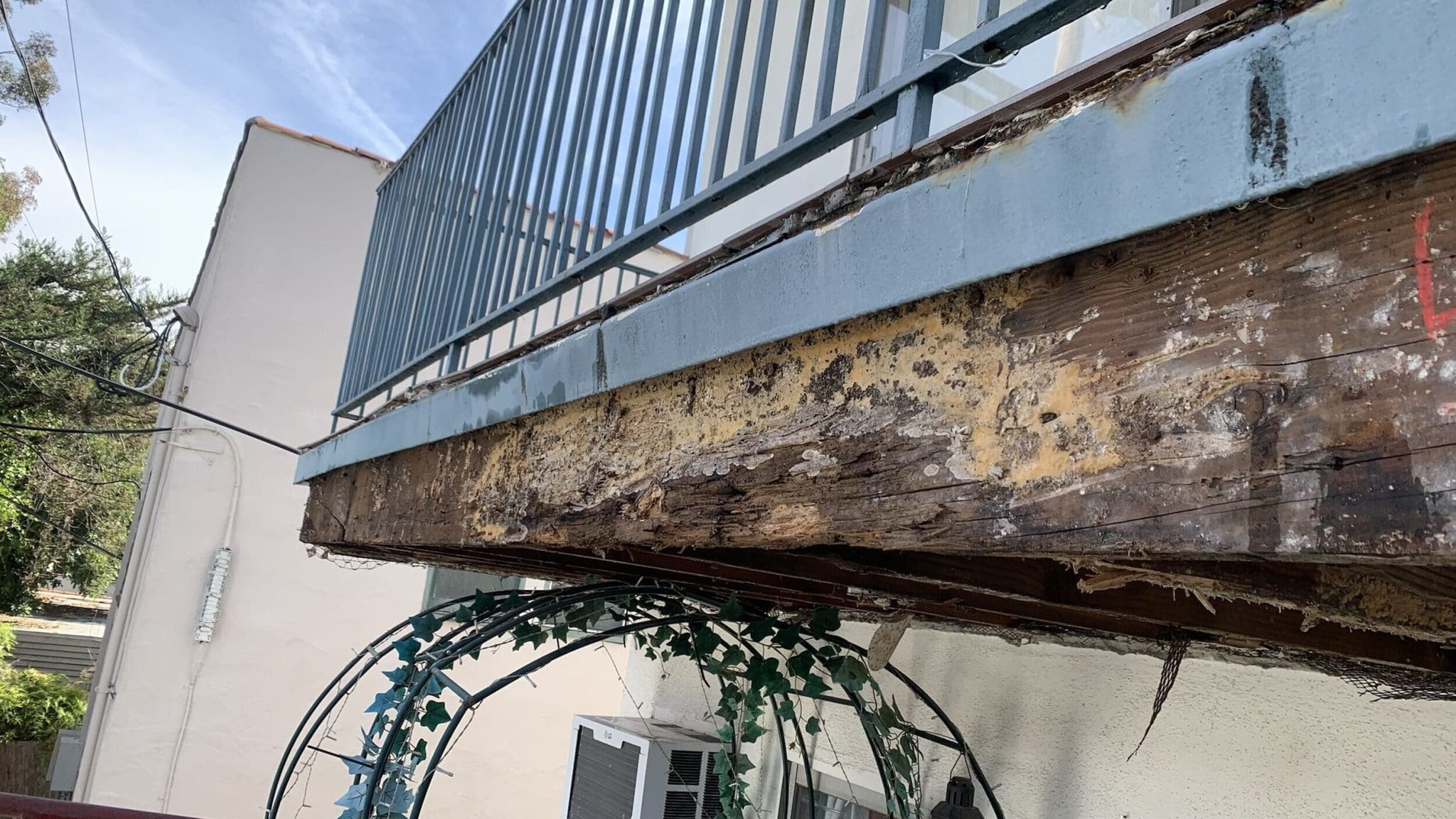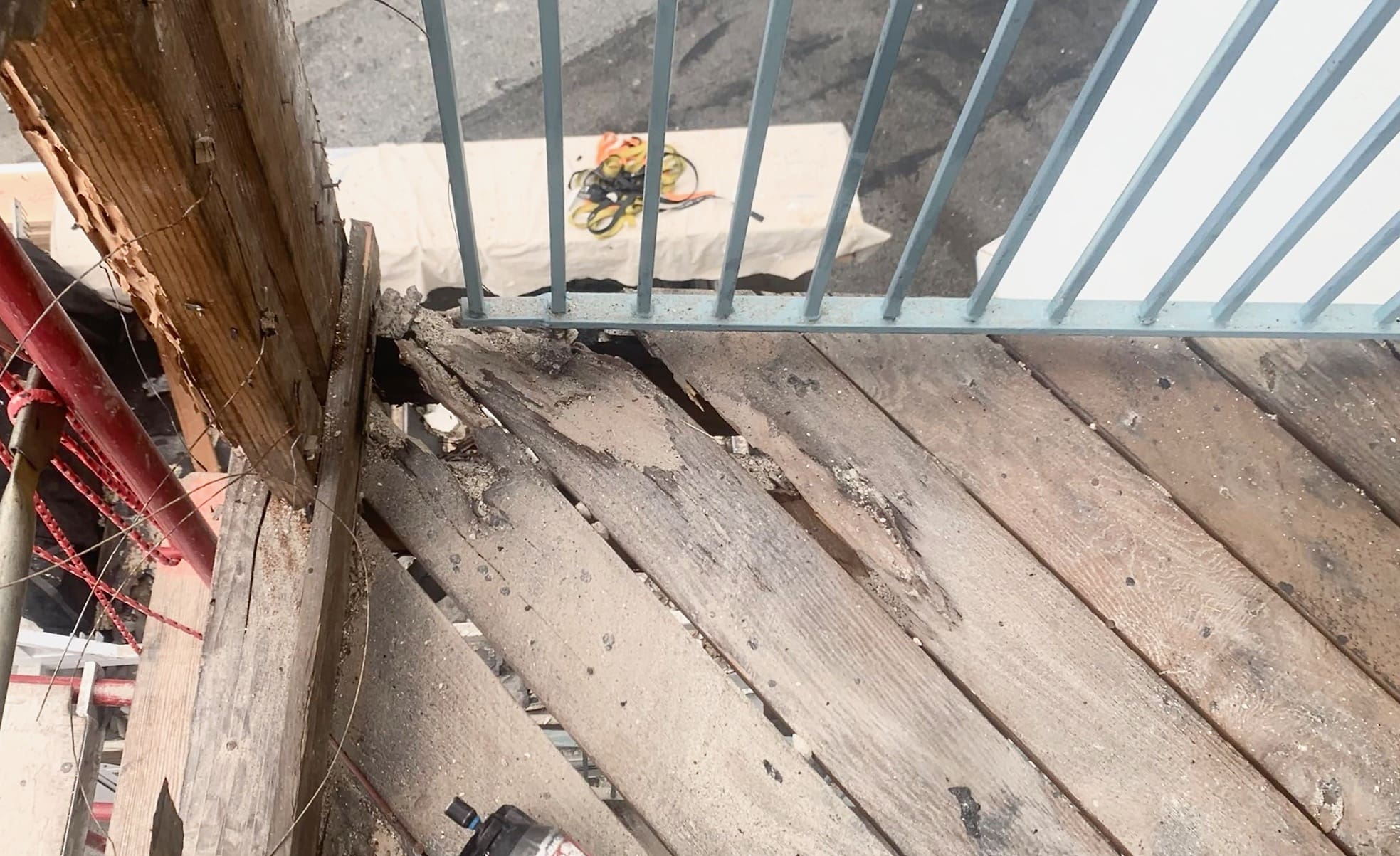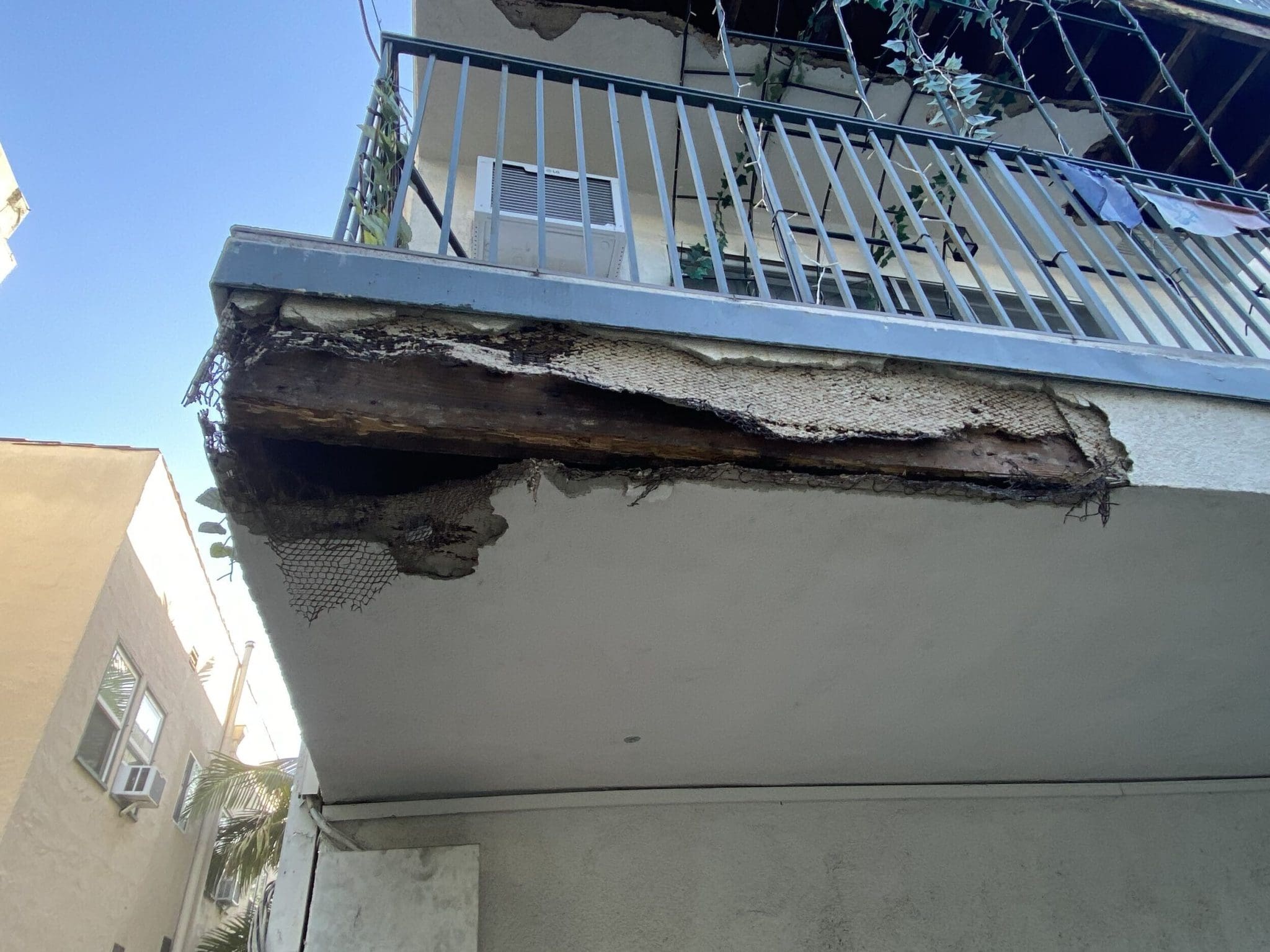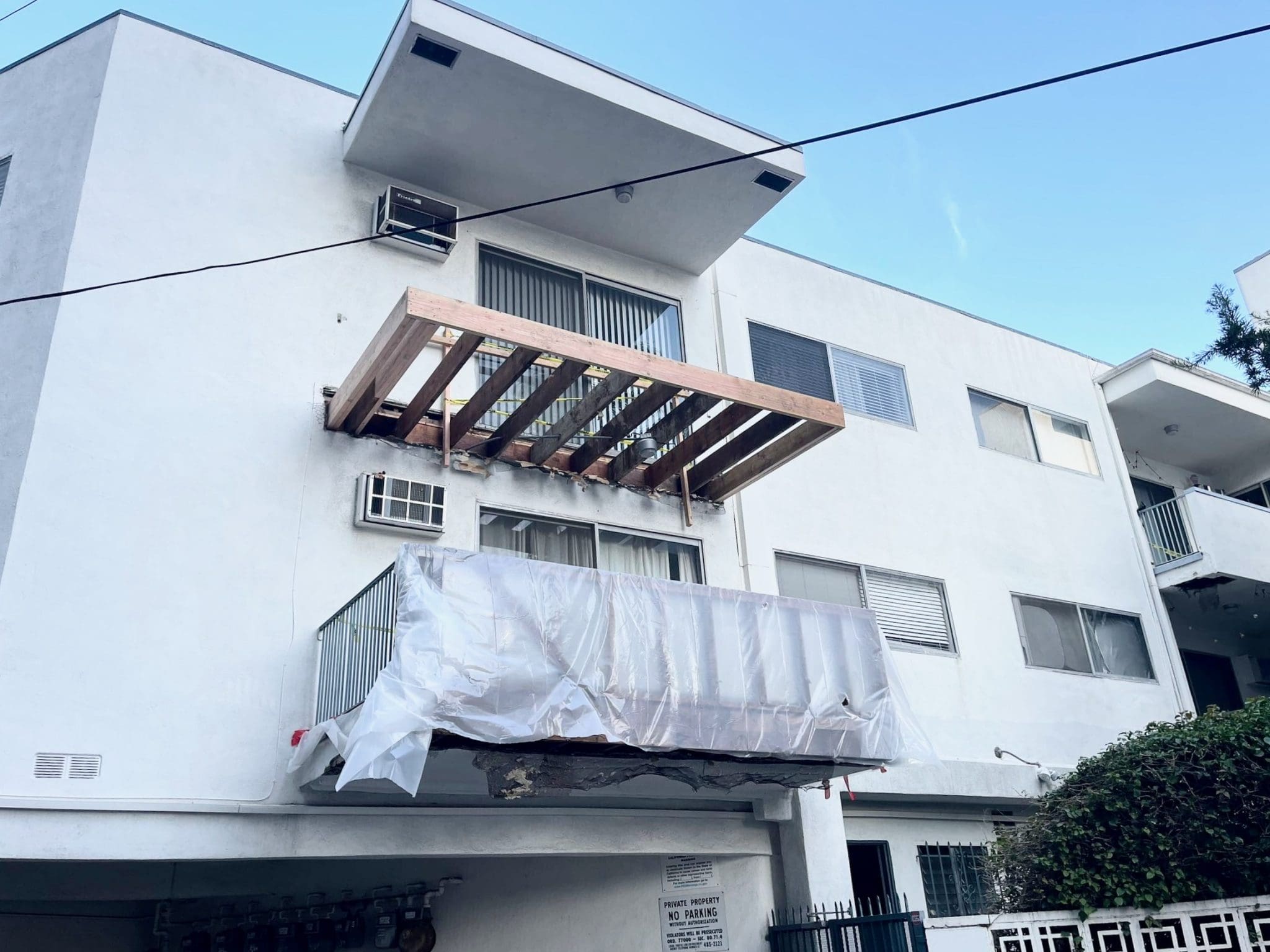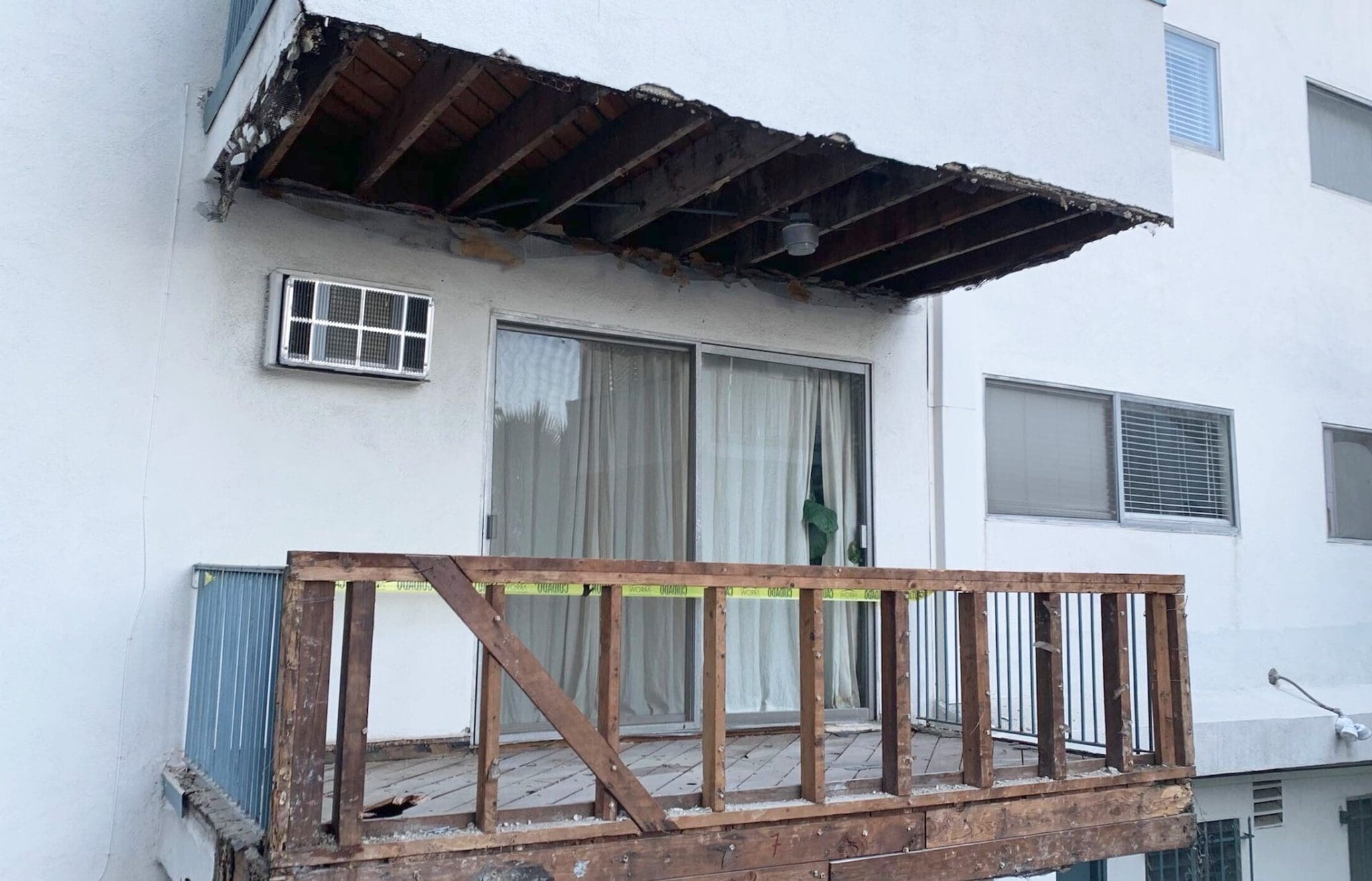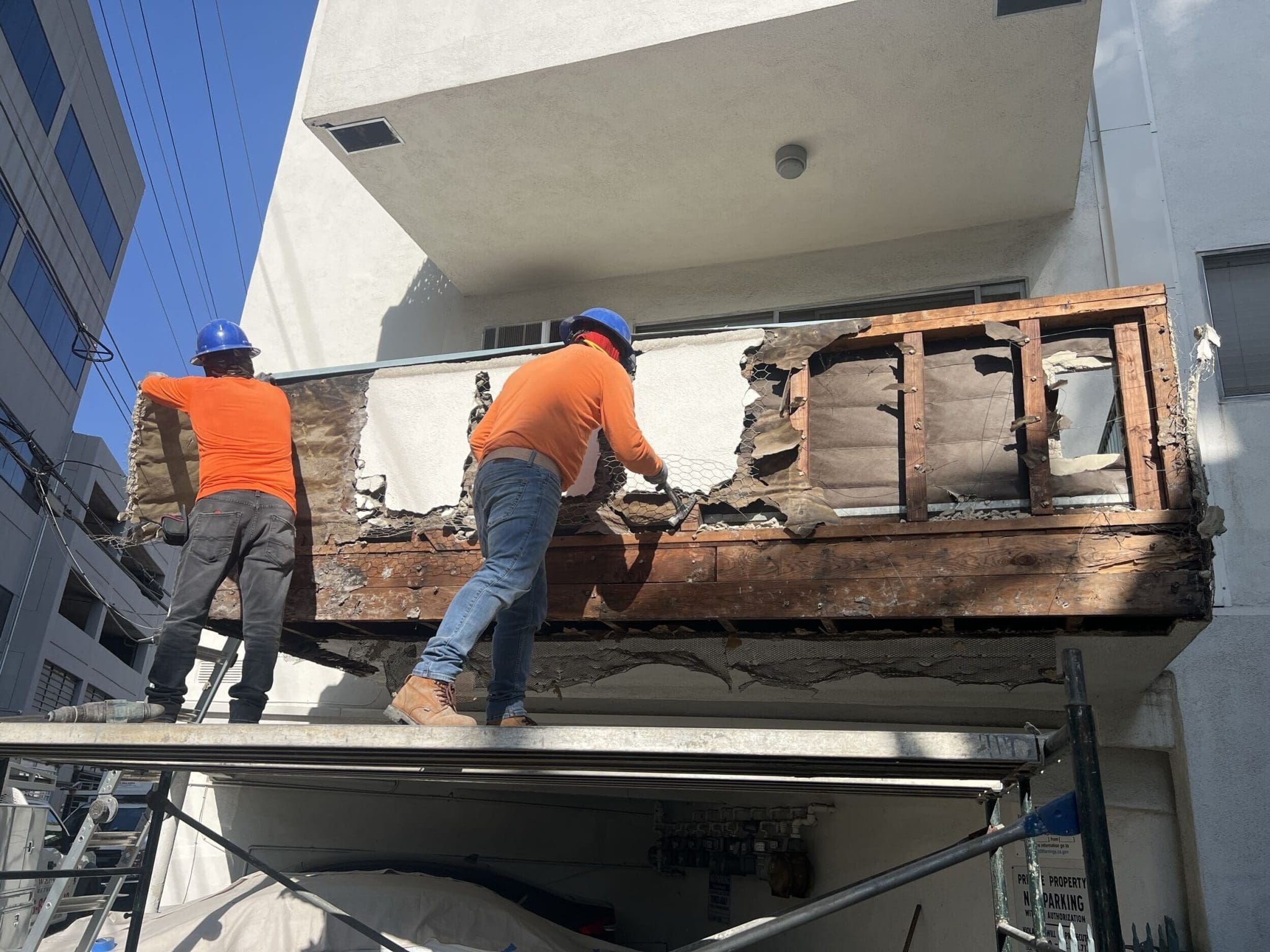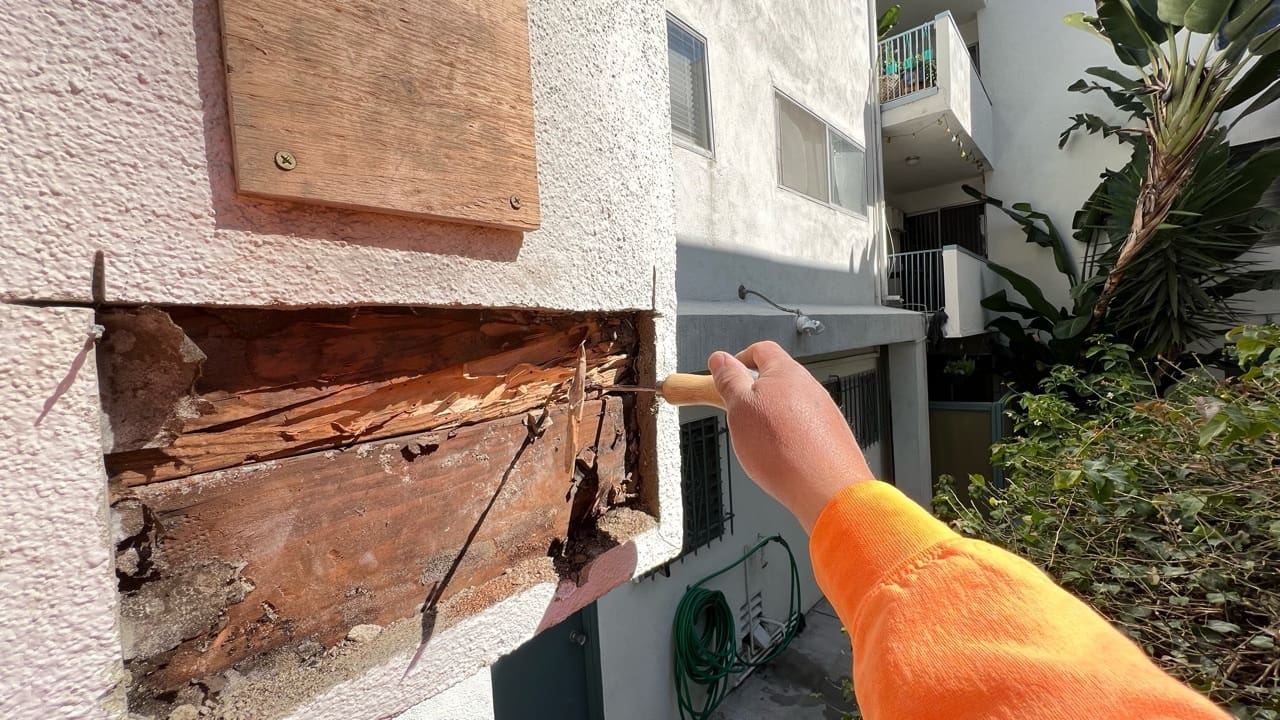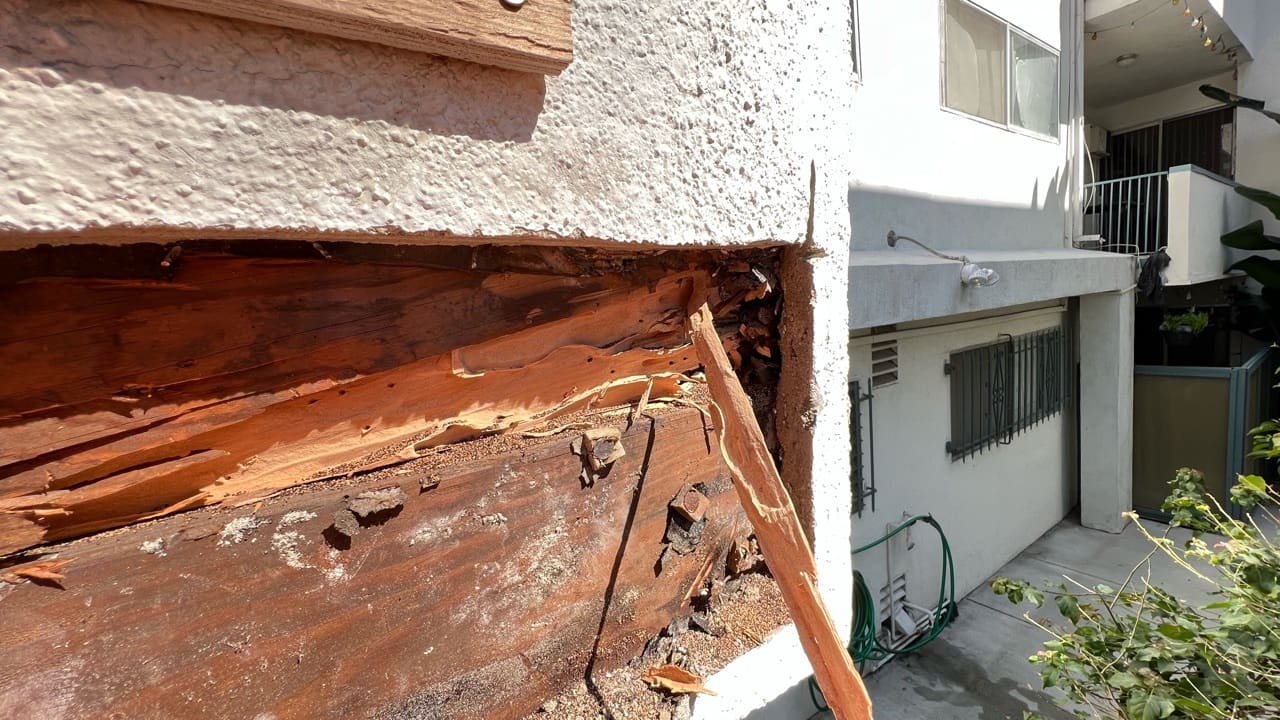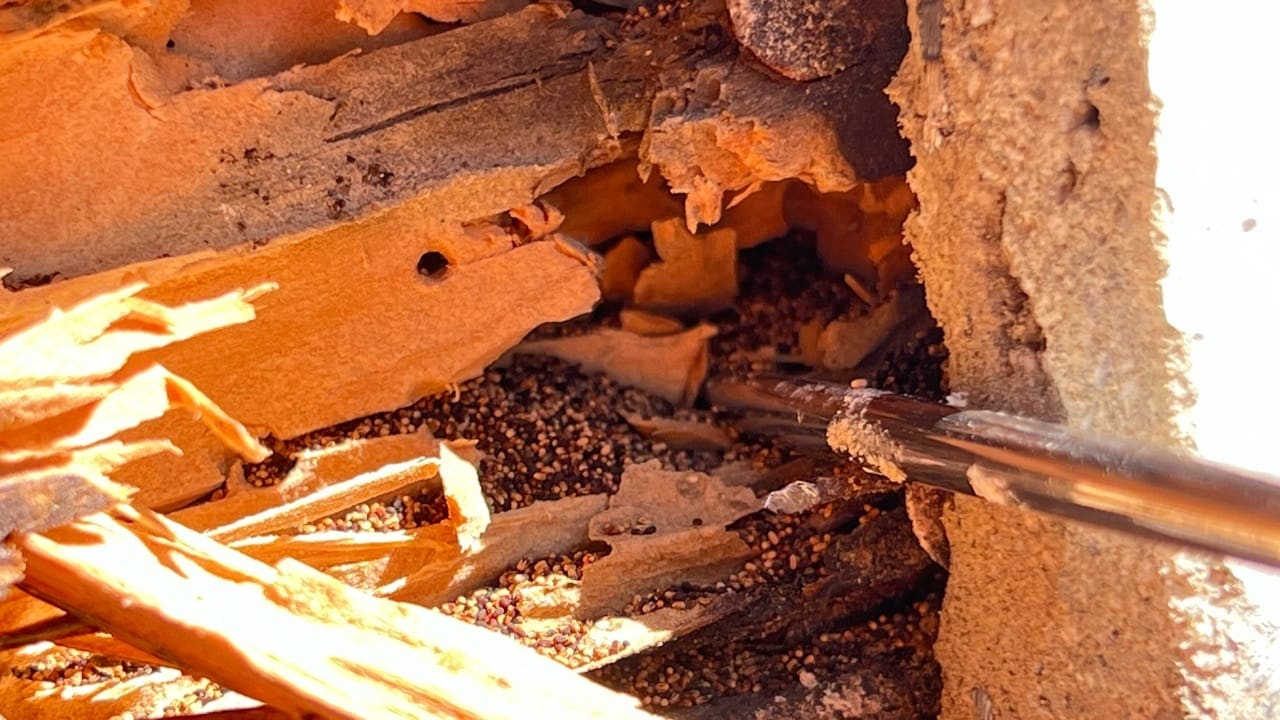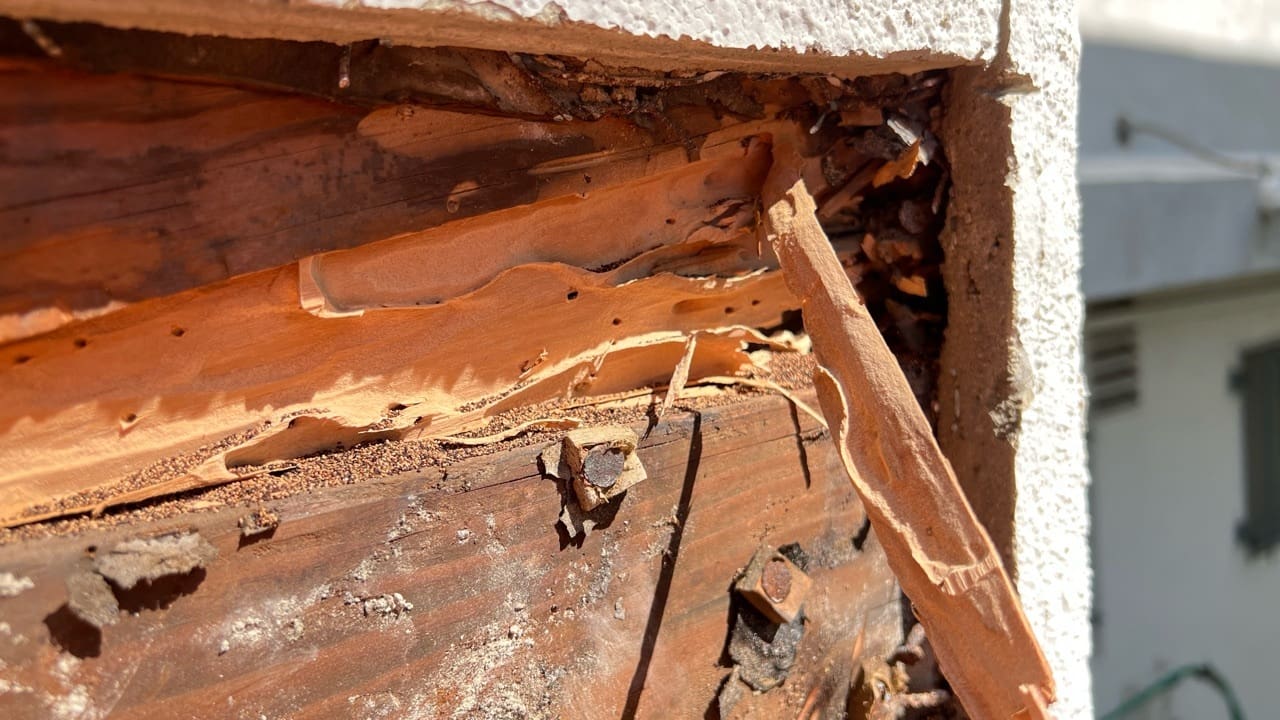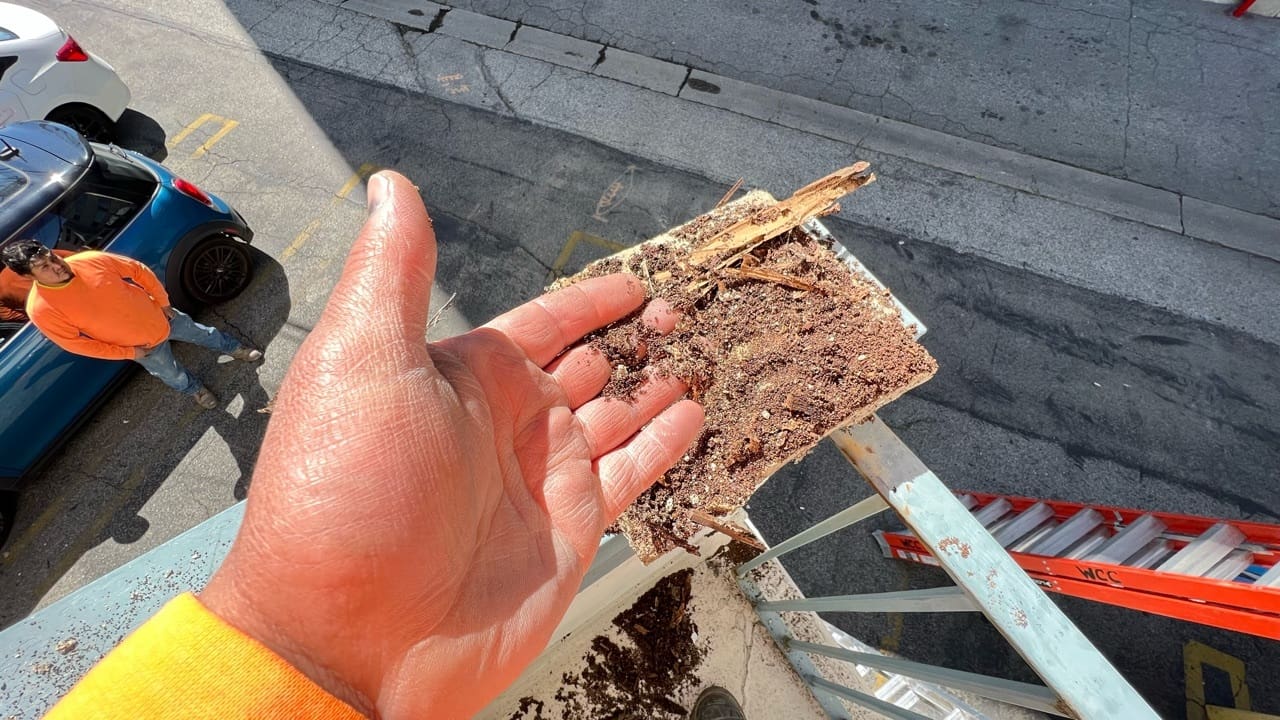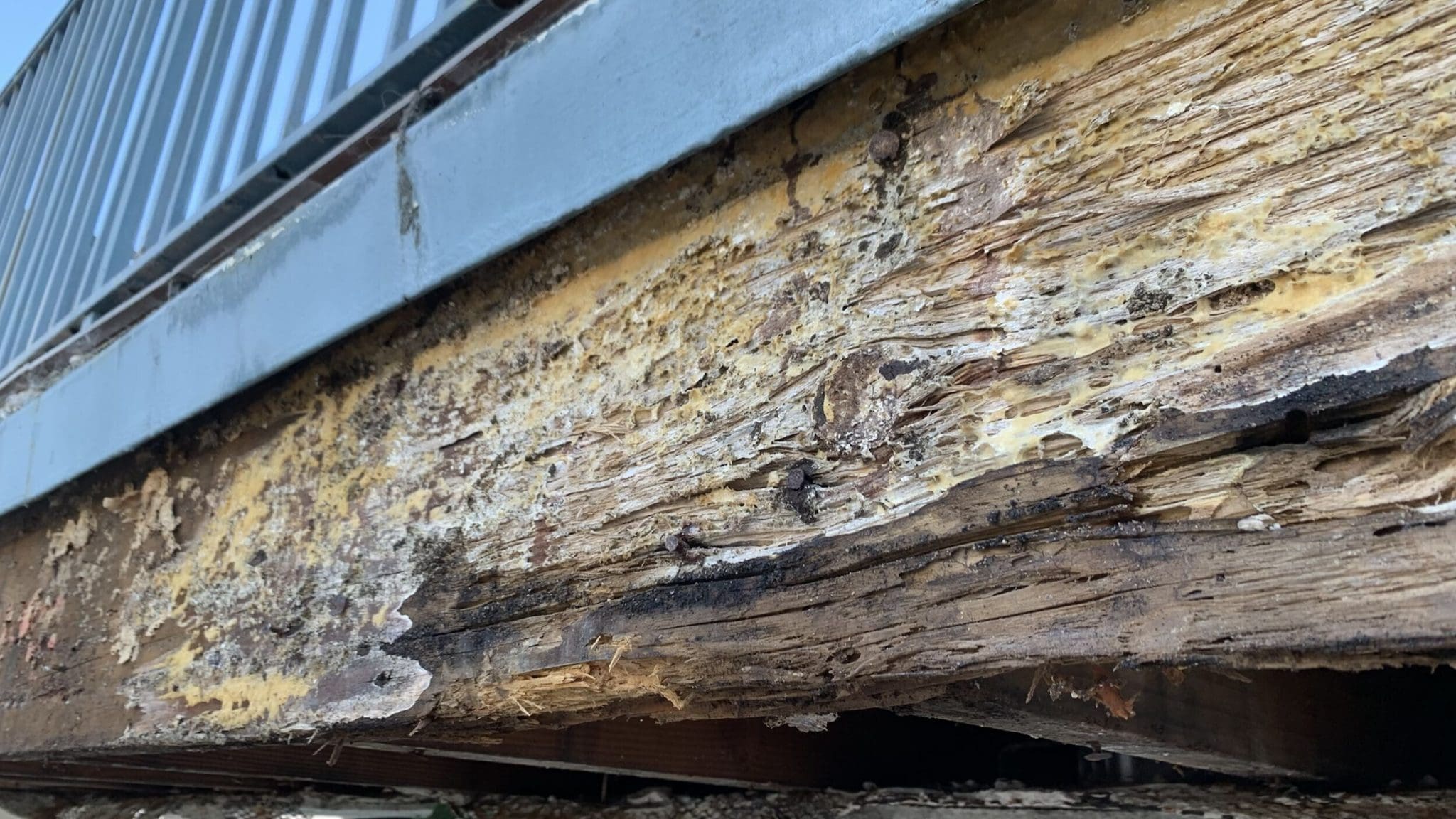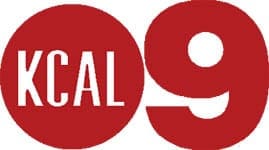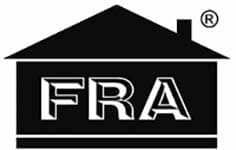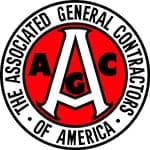YOUR BUILDING MUST BE INSPECTED IF YOU ANSWER “YES” TO THESE QUESTIONS:
- Does your building have 3 or more units?
- Does your building have “Exterior Elevated Elements” (EEE’s)? (for example, exterior balconies, decks, porches, stairways, walkways, entry structures, or other exterior elements with walking surfaces)
- Do your elevated structural elements rely substantially on wood or wood-based products for structural support?
- Are your exterior elevated elements walking surfaces more than 6 feet above ground level?
If you answered “Yes” to the above questions, then the California Balcony Inspection Laws apply and you must have your EEE’s inspected by January 1, 2026. But wait! Read the discussion below to see that there are plenty of reasons to get inspected much, much earlier!
California Balcony Inspection Law Deadline Looming – Act Before January 1, 2026
CALIFORNIA’S MANDATORY “BALCONY INSPECTION LAWS” (SB 721 AND SB 326)
Two California state laws, California Senate Bill 721 (SB 721) and California Senate Bill 326 (SB 326), have been “on the books” for a while, and both have important consequences in the coming years for apartment building owners and residential Condominium associations.
These “California Balcony Inspection Laws” were passed by the California legislature in 2018 and 2019, in response to the 2015 death of six UC Berkeley students at a downtown apartment complex due to the collapse of a fifth-floor balcony. The legislature determined that these deaths would have been preventable, if a proper inspection was done to determine that the balcony was in poor condition.
WHAT DO CALIFORNIA BILLS SB 721 AND SB 326 REQUIRE?
It is important to note that one law, SB 721, relates to multi-family residential apartment buildings (commercial apartment buildings) and the second law, SB 326, relates to condominiums controlled by a Condominium association. While the two laws are similar, they do have some important differences.
First, the similarities: both laws require inspections that evaluate the structural integrity, flashings, and waterproofing measures incorporated into decks, balconies, and other “Exterior Elevated Elements” (“EEE”) that rely in whole or in substantial part on wood structural supports. The EEE that apply in this case are ones that are more than six feet above ground level, in buildings that have 3 or more units.
Such EEE are structures (including supports and railings) such as: balconies, decks, porches, stairways, walkways, and entry structures that extend beyond exterior walls of the building and which have a walking surface that is elevated more than six feet above ground level, are designed for human occupancy or use, and rely in whole or in substantial part on wood or wood-based products for structural support stability of the exterior elevated element. Also included in the required inspections are the EEE’s “associated waterproofing elements” (i.e., flashings, membranes, coatings, and sealants).
Second, note below the various differences in the laws:
SB 721 CALIFORNIA DETAILS
- Owners have until January 1, 2026, to complete the first inspection, and must have an inspection every 6 years (or less) thereafter.
- A new inspection is not required until January 1, 2026, if the property was inspected between January 1, 2016, and January 1, 2019. Thereafter, a new inspection is required every six years.
- If an adequate inspection was conducted between January 1, 2019, and the present time, a re-inspection is not required, until six years after the date of the inspection report, and thereafter, every six years.
- The inspections must be performed only by a licensed architect, civil or structural engineer, or a building contractor holding specific licenses as a B General Contractor or C5 Framing. Although SB 721 originally prohibited balcony repair contractors who conducted inspections from repairing faulty EEEs, SB 607, signed into law in September 2021, eliminated this prohibition! Today, California law allows contractors to both inspect and repair EEEs at multi-family residential apartment buildings!
- There are three scenarios that may occur upon apartment balcony inspections:
- If the inspector finds that no apartment balcony repair is necessary, no further action is required, other than record-keeping steps.
- If the inspector finds that there are EEEs that require repairs but there are no immediate safety concerns, the building owner will apply for a repair permit within 120 days after they receive the inspection report. When the permit is approved, the owner has 120 days to complete the work (although the city building department can grant extensions).
- If the inspector finds that there are EEEs that pose an immediate health and safety threat to residents or that emergency repairs are necessary, then SB 721 requires the inspector to send a copy of the inspection report to the property’s local enforcement agency (city building and safety department) in 15 days. At that point, the enforcement agency may declare the building to be substandard and send the owner an abatement notice, along with time frames to resolve the issues.
- Inspectors must notify local enforcement authorities if the building owner doesn’t comply with the repair requirements within 180 days. That notice gives the owner a 30-day period to complete the repairs. If the local enforcement authorities do not grant the owner an extension to complete the repairs, after 30 days the owner gets a daily civil penalty until repairs are complete (the penalty can also be in the form of a building safety lien on the property).
- The California Balcony law also requires the building owner to keep copies of at least two inspection cycles worth of inspection reports in their permanent records, and the owner must also disclose and deliver the reports to the buyer if the building is sold.
SB 326 CALIFORNIA DETAILS
- Condominium associations have until January 1, 2026, to complete the first inspection, and must have an inspection every 9 years (or less) thereafter.
- A new inspection is not required until January 1, 2026, if the property was inspected between January 1, 2016, and January 1, 2019. Thereafter, a new inspection is required every six years.
- If an adequate inspection was conducted between January 1, 2019, and the present time, a re-inspection is not required, until six years after the date of the inspection report, and thereafter, every six years.
- Unlike SB 721, which allows building contractors, licensed architects, or structural/civil engineers to make inspections, SB 326 only permits a licensed architect or structural/civil engineer to inspect (note that SB 326 was amended by AB-2114 to additionally authorize a civil engineer to conduct the inspection, and AB-2114 was signed into law, and took immediate effect, on July 15, 2024). Moreover, large Condominium associations may also need to hire a statistician, to calculate the number of EEEs that are to be inspected (as the law requires a statistically relevant sample size to be inspected – see additional detail below). SB 326 doesn’t have a restriction for having Los Angeles balcony repair contractors do the remediation work, as such licensed contractors must not provide EEE inspections under the law.
- There are three scenarios that may occur upon a condo building inspection:
- If the inspector finds that no balcony structural repairs are needed, no further action is required, other than record-keeping steps.
- If the inspector finds that non-critical repairs needed, the Condominium association is not required to apply for permit repairs under any particular timeline, and has full control of the timeline to complete any required repairs.
- If the inspector finds that there are EEEs that pose an immediate health and safety threat to residents or that emergency repairs are necessary, SB 326 requires the inspector to send a copy of the inspection report to the property’s local enforcement agency (e.g., the city’s building and safety department) in 15 days. The association then must take preventative steps immediately to prevent access to the affected EEEs until repairs are performed, inspected, and approved by the enforcement agency.
- Note that if the Condominium association submitted a building permit application on or after January 1, 2020, the first inspection to its property must occur no later than six years following the issuance of the certificate of occupancy.
- Interestingly, SB 326 invalidated the various “poison pen” provisions in Covenants, conditions, and restrictions (“CC&Rs”) that previously insulated developers and builders from construction defect litigation.
- The law also requires the Condominium association to keep copies of at least two inspection cycles of inspection reports in their permanent records and as such, an Condominium association is required to maintain inspection reports for 18 years.
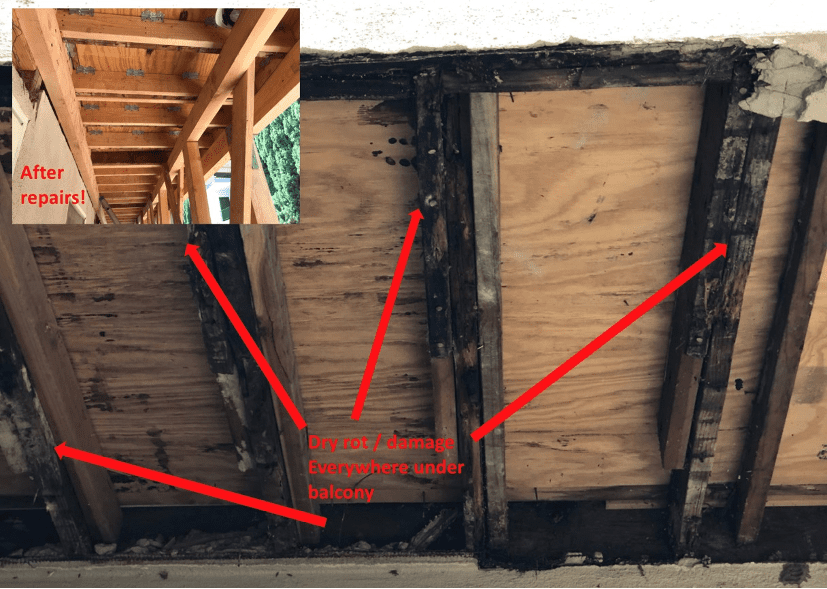
WHAT WILL BALCONY INSPECTIONS CONSIST OF?
The California code requires that the exterior elevated element inspection should identify each type of EEE and the various components of the deck, balcony, landing, or stairway structure. After they are identified, the inspection should include, at a minimum, an evaluation of the:
- Condition, adequacy and performance of load-bearing components
- Condition, adequacy and performance of associated waterproofing elements
- Evaluation of expected future performance and projected service life
INSPECTION METHODOLOGY UNDER SB 721 CALIFORNIA & SB 326 CALIFORNIA
SB 721 requires that 15% of each type of EEE in the building be inspected as part of the initial round of inspections prior to January 1, 2026. After six years, the next randomly selected 15% sampling of EEEs would need to be inspected.
SB 326 states that a “statistically significant sample” of EEE’s must be inspected (defined as 95% confidence, plus or minus 5%). Obtaining this number will likely require the Condominium association to employ a statistician to calculate the number of EEE that should be inspected.
In undertaking the inspection, the inspector must, among others:
- Identify the EEE subject to inspection
- Evaluate the physical condition of the EEE and whether or not they pose a threat to the health and safety of residents
- Evaluate the expected future performance of the EEE and their remaining useful life
- Make recommendations for any repairs (e.g., repair balcony floor or balcony replacement) and
- Sign the report (and under SB326, include it in the Condominium association’s reserve study).
WHAT SHOULD APARTMENT BUILDING OWNERS AND CONDO BUILDING OWNERS IN THE GREATER LOS ANGELES AREA DO RIGHT NOW?
While it may seem to some that the January 1, 2026 California balcony inspection law deadline is far, far away and “can be ignored” for now, nothing can be further from the truth! This is because while the Los Angeles area is home to many thousands of apartment complexes and condo buildings, the city only has a relatively small number of engineers and balcony inspection service providers to conduct balcony inspections, or qualified contractors who can undertake the required repair work!
This means that the more one delays and the closer one gets to the inspection deadline, one will see:
- Higher demand for inspections
- Less availability of qualified engineers, inspectors, and contractors to conduct inspections
- Higher prices for inspections and
- Higher prices to remediate any safety issues.
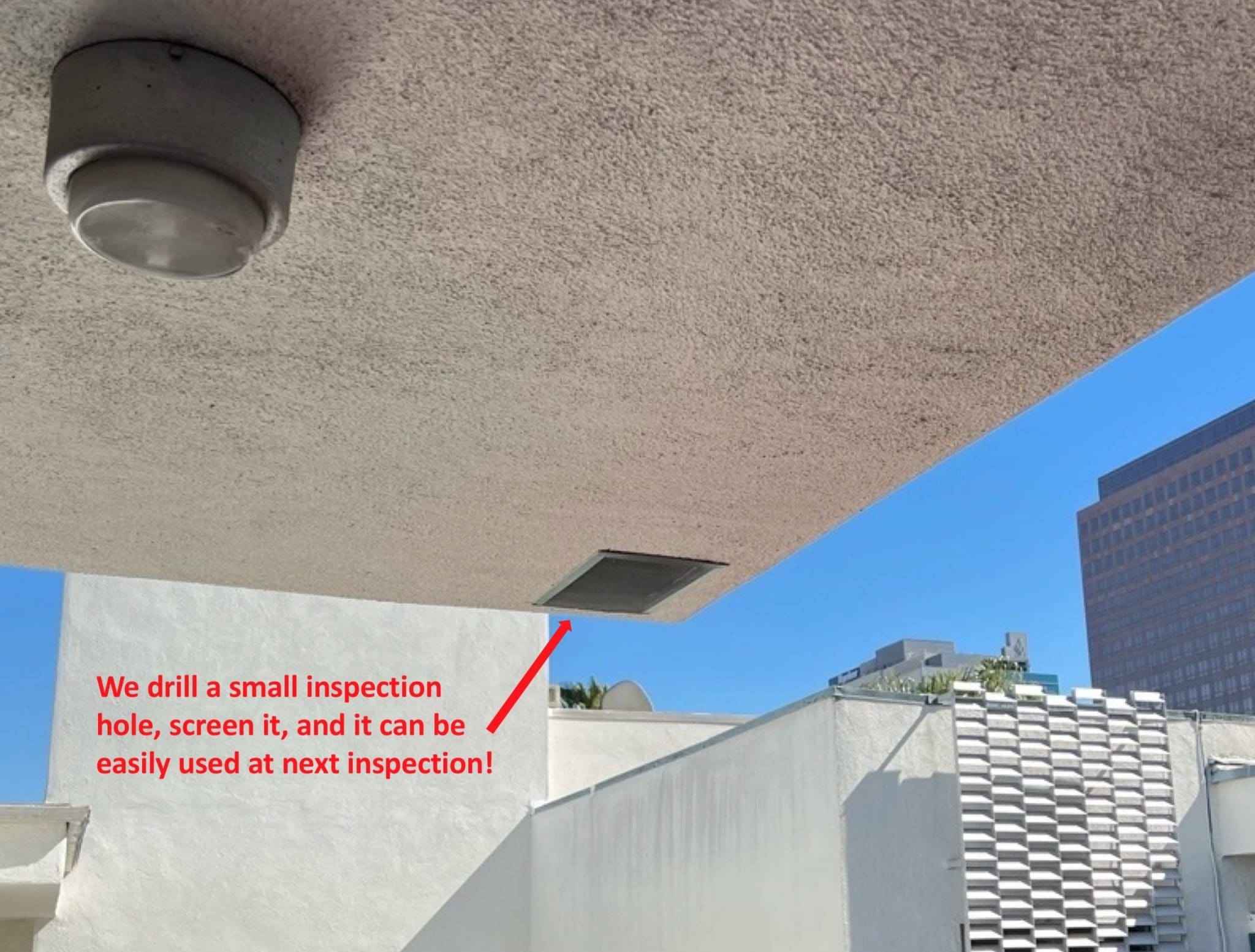
ACCEPT NO DELAYS FOR BALCONY INSPECTION LAW CALIFORNIA
Getting inspected earlier means having more flexibility to schedule an inspection with balcony inspection contractors when you want it, getting a better balcony inspection service price, and receiving a better price for potential balcony repairs in Los Angeles (if any are needed)!
If you are heading to Google to ask whether there are any “balcony repair contractors near me” know that Weinstein Construction’s professionals are experts at balcony repairs and we want to be your balcony contractors! There’s no need to be searching “balcony contractors near me” as our professionals can undertake a balcony replacement, balcony repair, residential balcony repair, and repairs for (EEE) Exterior Elevated Elements!
Act now! Call us today at 866-623-5788 to schedule your free “California Balcony Law” consultation – take advantage of lower prices today and get help in planning for this important and mandatory inspection program and balcony repairs in Los Angeles!
FREQUENTLY ASKED QUESTIONS
You can find the actual text of the laws by clicking on the links below:
https://leginfo.legislature.ca.gov/faces/billNavClient.xhtml?bill_id=201720180SB721
https://leginfo.legislature.ca.gov/faces/billNavClient.xhtml?bill_id=201920200SB326
Yes, of course, call Weinstein Construction today at (800) 862-6582 to schedule your free “Balcony Inspection Bill California” consultation – take advantage of lower prices today and get help in planning for this important and mandatory inspection program!
Both the cost and timing of a balcony inspection will depend on a multitude of factors, for example:
- the number of elevated structures inspected to achieve the high confidence level required by the law;
- whether or not the EEE is covered by a stucco finish which will need to be removed;
- Whether or not the EEE has a soffit which will need to be removed;
- The height of the EEE from the ground;
- Whether or not access must be provided to individual apartments or condos;
- Whether or not inspecting the EEE will require the use of lift equipment (e.g., to repair balcony floor).
Yes, condos are actually subjected to SB 721 when an apartment building is being converted into condos. And in the case of a condo conversion, the inspections must be performed before the first close of escrow of a condo unit. Note that apartment-condo conversions sold after January 1, 2019, must comply with these new requirements.
TESTIMONIALS

Weinstein Construction redid my foundation and retaining wall and I’m very happy with the work!

We had our basement retrofitted. Very courteous to us, very attentive. I was very impressed with the people who came to do the job. They were polite, well dressed, and really seemed to know what they were doing. We feel a lot safer now than we would have otherwise.

We had used Weinstein to earthquake retrofit our house. First, my intention was to do it myself, but we got a very nice sales rep over and he went through the whole procedure and by putting a thought into I concluded that it was not worth it for me to spend 14 days under the house. They came out, a top professional crew, they did it in a day, and we really loved what they did.

We are pleased with the results. The people were on time, they were neat, clean, and even the “big boss” was very nice and accommodating, so we’re happy with the services.

I was very happy. Very clean job. Very satisfied, and I recommend it to everybody.

We had our house retrofitted. Immediately we noticed the stability of it, even when we walked the house. Now it’s so much better and it’s stabilized, we’re very confident. It went very well and we’re very pleased.

They did a great job, they were on time, clean, and the price was right. I recommend you do the same.

House was built in 1933. They did the right job, they did a very good job and we’re very happy with the results. I recommend them.
